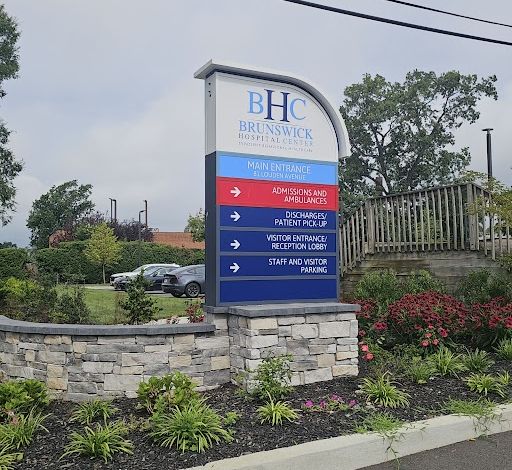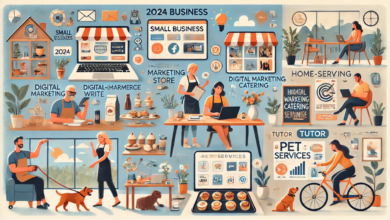Custom Sign Design: How Sign Companies Bring Your Vision to Life

Your business signage is more than just a way to identify your location—it’s a powerful marketing tool that communicates your brand identity, attracts customers, and makes a lasting impression. Custom sign design ensures that your signage stands out and resonates with your target audience.
Step 1: Initial Consultation and Concept Development
The design process begins with a conversation about your goals, ideas, and needs.
What to Expect:
- Understanding Your Brand: Skilled designers take the time to learn about your business, including its values, mission, and target audience.
- Identifying Goals: Are you looking to increase visibility, promote a specific product, or create a memorable aesthetic?
- Exploring Ideas: Designers work with you to brainstorm creative concepts, taking inspiration from your vision, competitors, and industry trends.
Why It Matters:
Sign company in Long Island suggests that the final design aligns with your business’s message and stands out in a crowded marketplace.
Step 2: Material Selection and Design Planning
The materials and structure of your sign are critical to its durability and visual appeal.
Considerations Include:
- Material Options: Metal, acrylic, wood, or LED-lit components depending on the desired look and location.
- Placement: Indoor or outdoor signs require different materials and construction techniques to withstand environmental conditions.
- Lighting: Designers consider illumination options, such as backlit, front-lit, or edge-lit signage, to ensure visibility day and night.
Why It Matters:
The right materials and planning ensure your sign not only looks great but also lasts for years with minimal maintenance.
Step 3: Design Drafting and Prototyping
Once the initial concept is established, the design team creates visual drafts to bring your vision to life.
What Happens Next:
- Digital Mockups: Designers use advanced software to create digital renderings of your sign, showing how it will look in its intended environment.
- Feedback and Revisions: You’ll have the opportunity to review the designs and suggest changes to ensure the sign meets your expectations.
- Prototyping: For complex or large-scale signs, a physical prototype may be created for final approval.
Why It Matters:
This step ensures you’re fully satisfied with the design before production begins, saving time and avoiding costly mistakes.
Step 4: Production and Fabrication
After finalizing the design, the sign moves into the production phase.
Key Elements of Production:
- Precision Cutting: Using advanced machinery to shape materials with exact measurements.
- Painting and Finishing: Applying colors, textures, and finishes that match your brand aesthetic.
- Assembly: Combining all components, such as lighting elements or custom fixtures, into the finished product.
Why It Matters:
Skilled fabricators bring the design to life with high-quality craftsmanship, ensuring the sign is both visually stunning and structurally sound.
Step 5: Installation
Proper installation is crucial for the effectiveness and safety of your sign.
What to Expect:
- Site Assessment: Professionals evaluate the installation site to determine the best placement and secure mounting options.
- Permitting and Compliance: Sign companies handle local permits and ensure your sign meets all zoning and safety regulations.
- Final Installation: The team carefully installs the sign, ensuring it’s level, secure, and highly visible.
Why It Matters:
Professional installation guarantees that your sign looks perfect and performs reliably in its environment.
The Importance of Working with Skilled Designers
Custom signage requires more than a good idea—it demands expertise and creativity to translate that idea into a functional, impactful sign.
Benefits of Skilled Designers:
- Creative Expertise: Designers know how to create unique designs that stand out while maintaining brand consistency.
- Technical Knowledge: Skilled professionals understand the nuances of materials, lighting, and installation techniques.
- Attention to Detail: Every aspect of the sign, from color selection to typography, is carefully considered to ensure maximum impact.
- Problem-Solving Skills: Designers can address challenges like limited space or strict regulations with innovative solutions.
Why Custom Signage is Worth the Investment
A well-designed custom sign is more than just an expense—it’s an investment in your business’s success.
- Attract Customers: Eye-catching signage draws attention and increases foot traffic.
- Enhance Brand Identity: Custom signs reinforce your brand’s unique personality and values.
- Improve Visibility: High-quality signs ensure your business stands out, even in competitive areas.
- Long-Term Value: Durable, professionally crafted signs last for years, reducing the need for frequent replacements.
Conclusion
Custom sign design is a collaborative process that transforms your vision into a tangible, impactful reality. By working with skilled designers, you ensure that every detail of your sign aligns with your brand and meets your business goals. From initial concepts to professional installation, local sign companies provide the expertise and craftsmanship needed to create signage that stands out and delivers results.
When you’re ready to invest in custom signage, partnering with a trusted sign company ensures a seamless process and a stunning final product that elevates your business.
See Also : Eco-Friendly Residential HVAC Solutions: Reduce Your Carbon Footprint
FAQs
1. How long does the custom sign design process take?
The timeline varies depending on the complexity of the design and fabrication, but most custom signs are completed within 2–6 weeks.
2. What types of signs can be customized?
Virtually any type of sign can be customized, including storefront signs, LED displays, banners, and vehicle wraps.
3. Can I provide my own design ideas for the sign?
Absolutely! Designers welcome your input and collaborate with you to bring your vision to life.
4. How much does custom signage cost?
Costs depend on factors like size, materials, complexity, and lighting options. A sign company can provide a detailed estimate after an initial consultation.
5. Are custom signs durable?
Yes, custom signs are made with high-quality materials designed to withstand the elements and provide long-lasting performance.




